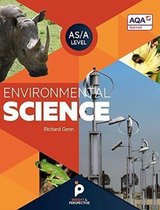Integrated Pest Management (IPM) Principles (EPA website)
What is IPM?
Integrated Pest Management (IPM) is an effective and environmentally sensitive approach
to pest management that relies on a combination of common-sense practices. IPM
programs use current, comprehensive information on the life cycles of pests and their
interaction with the environment. This information, in combination with available pest
control methods, is used to manage pest damage by the most economical means, and with
the least possible hazard to people, property, and the environment.
The IPM approach can be applied to both agricultural and non-agricultural settings, such as
the home, garden, and workplace. IPM takes advantage of all appropriate pest management
options including, but not limited to, the judicious use of pesticides. In
contrast, organic food production applies many of the same concepts as IPM but limits the
use of pesticides to those that are produced from natural sources, as opposed to synthetic
chemicals.
How do IPM programs work?
, IPM is not a single pest control method but, rather, a series of pest management
evaluations, decisions and controls. In practicing IPM, growers who are aware of the
potential for pest infestation follow a four-tiered approach. The four steps include:
Set Action Thresholds
Before taking any pest control action, IPM first sets an action threshold, a point at
which pest populations or environmental conditions indicate that pest control action
must be taken. Sighting a single pest does not always mean control is needed. The
level at which pests will become an economic threat is critical to guide future pest
control decisions.
Monitor and Identify Pests
Not all insects, weeds, and other living organisms require control. Many organisms
are innocuous, and some are even beneficial. IPM programs work to monitor for
pests and identify them accurately, so that appropriate control decisions can be
made in conjunction with action thresholds. This monitoring and identification
removes the possibility that pesticides will be used when they are not really needed
or that the wrong kind of pesticide will be used.
Prevention
As a first line of pest control, IPM programs work to manage the crop, lawn, or
indoor space to prevent pests from becoming a threat. In an agricultural crop, this
may mean using cultural methods, such as rotating between different crops,
selecting pest-resistant varieties, and planting pest-free rootstock. These control
methods can be very effective and cost-efficient and present little to no risk to
people or the environment.
Control
Once monitoring, identification, and action thresholds indicate that pest control is
required, and preventive methods are no longer effective or available, IPM programs
then evaluate the proper control method both for effectiveness and risk. Effective,
less risky pest controls are chosen first, including highly targeted chemicals, such as
pheromones to disrupt pest mating, or mechanical control, such as trapping or
weeding. If further monitoring, identifications and action thresholds indicate that
less risky controls are not working, then additional pest control methods would be
employed, such as targeted spraying of pesticides. Broadcast spraying of non-specific
pesticides is a last resort.
What Is Integrated Pest Management (IPM)? (UC IPM)





